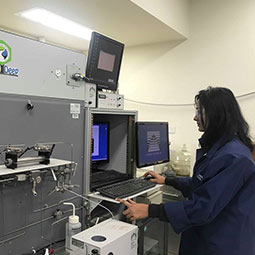Carbon dioxide (CO2) is one of the main greenhouse gases released to the atmosphere mainly from the burning of fossil fuels, such as coal, oil and natural gas, which currently supply around 85% of the world’s energy needs. Moreover, due to the low relative cost and abundance of fossil fuels, it is likely that fossil fuels will govern the economy for at least the next 25 to 50. Therefore, it is necessary to have proper CO2 emission control techniques to create a safer atmosphere for human beings. Geosequestration of carbon dioxide (CO2) in deep saline aquifers is one of the most feasible approaches to mitigate global warming. But in actual field condition, one of the major concerns of underground CO2 sequestration is the CO2 leakage through the caprock due to numerous reasons.
The injection and buoyancy pressure of CO2 can activate both fractures and faults in the caprock. On the other hand, the rock matrix porosity and fracture apertures (primary and secondary fractures) can be affected by chemical reactions (dissolution and precipitation) between CO2 and caprock minerals. As a result, in the long-term scenario there are possibilities of leaking CO2 through caprock. Therefore, it is very crucial to find the changes of chemico-mineralogical and hydro-mechanical properties of the caprock in the presence of CO2 in the long-term scenario. Such understanding can reduce the risks related to leakage of CO2 by selecting suitable sites and controlling the injection pressure and injection intervals etc. Therefore, this research is aimed to obtain a comprehensive knowledge on chemico-mineralogical and hydro-mechanical properties of the caprock in long-term scenario under deep saline CO2 sequestration environment by conducting experimental studies, numerical and analytical simulations.

